by Glen M. Ballou
Sound amplification has become as common in our life as Coke, and rightfully so. People should not be required to concentrate on listening to the sound, but should be able to concentrate on absorbing the message.
Sound-reinforcement systems range from those designed to cover 100,000 people and costing more than $250,000 to a small system to cover 20 people and costing $250. Public address or PA systems are usually limited-response, inexpensive sound-reinforcement systems. PA systems do, nevertheless, have their place and are very necessary for the small "picnic" type sound systems where ease of installation and operation are very important.
Every system, no matter what size, must satisfy four basic parameters:
1-They must be loud enough.
2-They must cover the entire audience area.
3-They must be able to be understood.
4-They must be capable of performing all functions the customer requires.
This article will cover the above parameters and their solutions for the small "picnic" type outdoor PA systems.
Loudness and Coverage
It is often said of PA systems, "It was so loud it hurt my ears" while another person might say of the same system, "It was so soft I couldn't make out what he said." One of the most difficult problems encountered in outdoor "picnic" PA systems is the ability to make the system loud enough everywhere without making some areas excessively loud and the entire system distorted. This is usually best corrected by placing the speakers properly and by using high efficiency speakers with good projection patterns.
Unfortunately, all outdoor PA systems must follow the laws of physics, and such phenomena we cannot change. One of these laws is known as the "inverse square of sound attenuation," which states every time the distance is doubled, the sound pressure level (SPL) is reduced 6 dB or to 1/4 of the reference sound intensity.
Outdoor PA systems require more power than indoor systems to produce a specific SPL at a specified distance. This is because outdoor systems very closely follow the "inverse square law" while indoor systems get help from reflections from the side walls, floors and ceilings to a point where, at DC (critical distance) and beyond, apparent level remains constant. Critical distance is defined as the distance where direct and reverberant sound are equal in level, often 8 to 20 ft. in the average room.
Because the inverse square law is followed outdoors, a speaker 4 ft. from an observer must produce an SPL of 110 dB to give a SPL of 76 dB at 200 ft. A level of 76 dB is the minimum level one should accept at the maximum required distance as 70-dB SPL is a fairly common noise level where the "picnic" type PA system is used. A 110-dB SPL is the same level as standing one foot from a man's mouth when he is shouting, while 76-dB SPL has the same level as being 50 ft. from the same shouter.
This difference in SPL between any two points can be determined by using the graph of Fig. 1. To determine the difference in SPL between any two distances, locate the differences in Fig. 1, go vertically to the diagonal line and then horizontally to the attenuation. Subtract the near distance attenuation from the far distance attenuation for the difference between the two. To determine this mathematically, see the appendix.
Let us assume that dF is the farthest distance the loudspeaker must project and dN is the closest distance the loudspeaker will project to. Raising the speaker in the air and moving it away from the audience does not appreciably increase dF; however, it does increase dN substantially as in Fig. 2. Raising the speaker 4 ft. and moving it back 4 ft. changes dN from 4 ft. to 9 ft. while only changing dF from 200 ft. to 204 ft. With an SPL of 110 dB at 4 ft. from the speaker as before, the front of the audience area will be 103 dB SPL or the same level as 2 ft. from the shouter and the rear of the area will still be 76-dB SPL. Raising the speaker to 12 ft. and moving it back 12 ft. changes dN to 20 ft. and dF to 212 ft. This would mean with 110-dB SPL at 4 ft., the front of the audience area SPL would be reduced to an SPL of 96 dB or a level equivalent to 4 ft. from the shouter, while the rear of the audience area would be 75.5-dB SPL. As can be seen, this position of the loudspeaker only decreased the dF SPL 0.5 dB, while decreasing the dN 14 dB. A difference in level of ±10 dB subjectively sounds about one-half or twice as loud as the reference sound.
In an outdoor system a ASPL of 4 dB would be ideal, however, 15 to 20 dB is acceptable as long as the system is being used for announcements, etc., and not as a sound-reinforcement system for high-quality music amplification.
Raising the speaker higher will reduce the SPL difference between the front and rear of the audience area, however methods of mounting and effects of wind and temperature on sound limit useful height to about 20 ft.
Once we have determined the relative acceptable levels between the front and rear of the audience area, we can determine the power required to drive the speakers. To do this, we must know the speaker's sensitivity and horizontal and vertical dispersion and the coverage angle required to cover the audience area.
Published speaker coverage angles or dispersion vary from a 60 to 120° circular coverage pattern (Fig. 3) to a rectangular pattern from 20 x 40° to 60 x 120° (Figs. 4 & 5). Unfortunately, sound waves are not all that easily controlled and the angle decreases as the frequency increases (Fig. 6). As can be seen, it is not uncommon for the dispersion angle of the speaker to vary from 220° at 200 Hz to 20° at 10 kHz. The dispersion angle is often given at 2-3 kHz and, therefore, for even coverage to 5-6 kHz, additional speakers are required.
It is very unusual, in outdoor systems, to require a large vertical coverage angle as the audience is usually either standing or sitting on ground level. Speakers with rectangular dispersion have an advantage over speakers with a circular or square dispersion for two reasons: 1-Outdoor sound has no precise boundaries, therefore, any sound which is not absorbed in the audience area is apt to project to unwanted areas (neighbors, etc.). 2-A driver which has the ability to produce a specified SPL into a sphere (omnidirectional) will have a much higher SPL when projected into a portion of that sphere. This translates to less required power input. This is described in the appendix.
We know that we require an SPL of 75 dB at 212 ft. Most speaker manufacturers rate their speaker sensitivity at either 4 or 10 ft. with one-watt electrical input power. Assuming the speaker sensitivity rating is at 4 ft. and we require an SPL of 75 dB at 212 ft., the speaker therefore must deliver 110 dB at 4 ft. This can be determined by adding the dB attenuation for dF as found in Fig. 1 to the SPL required at dF. In our example, using Fig. 1, go vertically from 212 ft. to diagonal line, then horizontally to attenuation of 34 dB SPL. Add this to the required SPL at 4ft., i.e., 34 dB + 76 dB = 110 dB SPL. Unfortunately, doubling the speaker power does not increase SPL by 6 dB, but only 3 dB, hence it is important, when running outdoor systems (often on battery), to use efficient speakers with controlled dispersion. If the manufacturer's speaker rating was 99 dB @ 1 W at 4 ft. and we require 110-dB program SPL at 4 ft., our Electrical Power Required to the speaker (EPR) would be 12.6 watts of program power (see appendix).
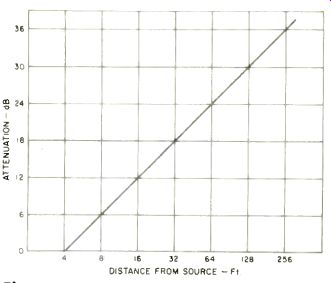
Fig. 1-Inverse square law attenuation of Sound.
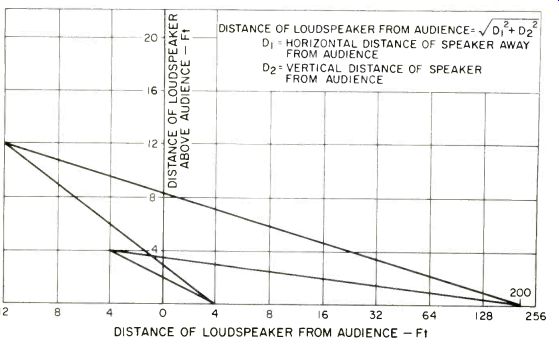
Fig. 2-Effect of moving the loudspeaker away from the audience.
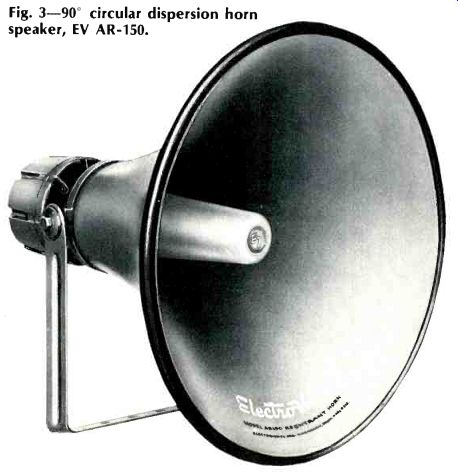
Fig. 3--90° circular dispersion horn speaker, EV AR-150.
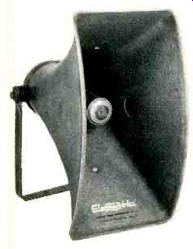
Fig. 4--70° x 100° rectangular dispersion horn speaker, EV FR-150.

Fig. 5-20° x 120° cone-type column loudspeaker, University CSO-62.

Fig. 6--Speaker coverage angle & Q of Altec sectoral horn.
All signals, with the exception of 26 pure sine waves, have a crest factor.
This means that the peaks of the signal are much higher for a given average power than if it were a sine wave. A crest factor of 10 dB or 110 times is common, therefore, the EPR of the amplifier for 12.6 watts of program power would be 125 watts (see appendix). Many paging horn loudspeakers have a sensitivity of 107 dB or more. This would reduce the EPR to the speaker to 2 watts program or 20 watts total.
Often the required coverage is much larger than the area covered by one speaker, therefore, more than one speaker is required to cover the area. The published speaker dispersion angle is that angle where the acoustical output is 6 dB down from the output on the speaker axis. To insure uniform coverage, the speakers must have at least 20 per cent overlap.
If the speakers are stacked and splayed, rather than mounted side by-side, the frequency response will be more uniform (Fig. 7). Solid-state amplifiers can become very unhappy when the load impedance is less than the specified output impedance taps of the amplifier. If more than two 8-Ohm speakers are used, it is preferable to use the 70-volt output common on the pro amplifiers and 70-volt transformers on each speaker. This also allows level adjustment for each individual speaker. If four or five speakers are always used and wired in parallel, the speakers can be connected between the 8-Ohm and 16-Ohm taps of the amplifier with only a small loss of power. Since solid-state amplifiers require very little idle power, 10 watts for a 25-watt amplifier and 20 watts for a 100-watt amplifier, it is advisable to use a 60to 125-watt amplifier for most "picnic" PA systems. This and efficient speakers guarantee adequate volume so it may be heard over the background noise.
Articulation
It is often said "The system was plenty loud, but I couldn't understand a thing he said." This condition is more prevalent in indoor systems where reverberation is an important factor affecting articulation. Outdoors, reverberation usually does not affect articulation, however, echo, poor signal-to-noise ratio (S/N), distortion, and poor frequency response can all affect articulation. In the reverberant areas, a required S/N of 25 dB is not unusual. In outdoor installations, where reverberation is minimum, a S/N of 3 to 6 dB is usually adequate, however, 6 to 10 dB would be preferred. In fact, the fantastic computer in our head can separate the signal from the noise when the S/N is less than 0 dB.
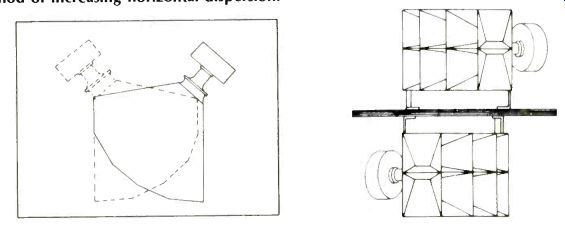
Fig. 7-Proper method of increasing horizontal dispersion.
Echo affects articulation two ways, by increasing the noise level and by adding confusion. A good way to better understand this type of confusion is to talk over the PA system while listening to yourself over a speaker placed 110 feet away. Since sound travels approximately 1,130 ft./sec., it takes 0.1 seconds for the sound to travel back to the talker. When talking over such a system, the talker usually slows down to give the sound time to catch up to him which, of course, it can't do. Next, move the speaker 40 feet away and normal talking can be resumed. Therefore, never have speakers more than 40 feet apart and the first speaker of a string of speakers more than 40 feet from the talker.
Inexpensive microphones, amplifiers, and speakers often have distortion exceeding 10 per cent. Under ideal conditions, 10 per cent distortion is probably acceptable as far as articulation is concerned, however, when S/N is borderline, 10 per cent distortion could increase the articulation loss beyond acceptable limits.
Since most amplifiers have low distortion (2 per cent) and good frequency response (50 Hz to 10 kHz ± 2 dB), they are not usually the problems in PA systems. Components which change acoustic energy to electrical energy (microphones) and electrical energy to acoustic energy (loudspeakers) are the hardest to make acceptable and require the expenditure of more time and money.
Frequency response of 300 to 3500 Hz, with a peak at 3000 Hz, may be ideal for telephone communications where a broad frequency response would create poor S/N because of long unshielded lines. The narrow frequency response is also acceptable because conversation is usually short.
In outdoor PA systems, this frequency response is not acceptable because the aggravation it produces causes the audience to block their ears to the system, reducing articulation. While the stereo enthusiast would prefer a frequency response that is flat from d.c. to infinity, it is not practical for small outdoor PA systems. What is important is to be able to reproduce some of the lower fundamentals of the male voice, 250 Hz minimum (100 Hz would be better) and to reproduce up to 6 to 8 kHz to assure proper reproduction of the sibilance of the speech, i.e. S's, Z's, etc. Using speakers with a relatively smooth response of 250 Hz to 8 kHz assures fairly good reproduction of the voice and at least acceptable reproduction of background music.
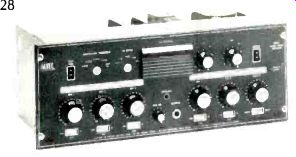
Fig. 8--75 W amplifier with battery operation and charge capabilities, Altec
1607A.
Microphones
There is always much discussion on the pros and cons of cardiod and omni-directional microphones. In outdoor systems, where the acoustic field is not reverberant, cardiod microphones will increase gain before feedback, particularly when the back of the microphone faces the loudspeaker. A second advantage of the cardiod microphone is that it can be used to discriminate between signal and noise. The heart-shaped pickup pattern of the microphone means that the talker or signal must be directed towards the front of the microphone, not towards the side or rear, and that the rear of the mike should be towards the unwanted sound or noise.
Talking into the side of the mike would reduce output about 6 dB, while talking to the rear would reduce mike output up to 20 dB.
All microphones should have an "on-off" switch so the announcers can turn the microphones off when not in use, reducing noise and allowing personal conversations to be carried on in the vicinity of the microphone. For a simple one-microphone system, the Shure SM82 microphone with built-in preamplifier and limiter can be used directly into a power amplifier, bypassing low level preamplifiers and reducing susceptibility to noise, etc.
Outdoor PA systems are susceptible to electrical interference (radio stations, hum, ignition, etc.) because of poor grounds, or lack of grounds, along with the lack of external shielding from building structures, so all microphone inputs should be low impedance and balanced to eliminate noise pickup and allow long microphone lines.
Required Functions

Fig. 9--Battery operating and charging unit.
Now that the system is designed to work well (a microphone input gives good quality speaker output), we must make the system do what the customer wants it to do. It is common to require battery power in portable outdoor systems. Many solid-state amplifiers are ideal for operating on battery power as they operate on a 14 V d.c. or 28 V d.c. power supply. This means they can easily be powered by 12 V auto batteries of 12-24 V Ni-Cad batteries. The advantages and disadvantages of automotive lead-acid batteries and Ni-Cad batteries are as follows:
Lead Acid Batteries
Advantages
1-High power capabilities (5-10 amperes for 8 hours).
2-Easy to obtain.
3-Can be connected in series for higher voltage.
Disadvantages
1-Heavy.
2-Cannot be tipped.
3-Require large connectors.
4-Require maintenance.
Ni-Cad Type Batteries
Advantages
1-Small.
2-Lightweight.
3-Can be used and stored in any position.
4-Small connectors.
5-Can be connected in series or parallel for other than standard capabilities.
6-Wide temperature range,-76°F to 158° F.
7-Maintenance Free.
Disadvantages
1-Ampere-hour ratings indicated are not for one hour, but 20 hour discharge, therefore, a 4.5 ampere-hour battery will supply 0.225 amperes for 20 hours or 4.5 amperes for 30 minutes.
2-Internal impedance very low, therefore, battery can be destroyed by shorting.
3-Batteries left on shelf for long periods require exercising to bring back their full capacity.
Many amplifiers have a built-in battery charging circuit (Fig. 8), however, those that don't, can have one easily installed. All that is required is a power rectifier which is forward biased when operating on battery, in parallel with a power resistor which charges the battery when the amplifier is operating on a.c. power (Fig. 9). Amplifiers should have a minimum of two low-impedance microphone inputs, as many outdoor PA systems are used for entertainment along with general paging. In this day of small, battery-operated, cassette tape recorders, it is also important to have an auxiliary high impedance input. All inputs must have their own volume controls.
Summary Now that we have looked at the problems of outdoor PA systems, does it mean we must go through all the preceding formulae every time we install a portable PA system? By all means, no; however, by knowing the problems and their solutions we can, through our own logic and good judgment, purchase and install outdoor "picnic" type sound systems with improved quality and articulation.
By following these do's and don'ts, acceptable outdoor "picnic" PA systems can be installed.
Do:
1-Have adequate amplifier power.
2-Use efficient speakers.
3-Use speakers with rectangular dispersion.
4-Mount speakers in the air and away from the front of the audience.
5-Aim speakers at the audience.
6-Stack and splay speakers when using more than one speaker for coverage from one point.
7-Use speakers with smooth frequency response 250 Hz to 8 kHz.
8-Use 70 V speaker lines when speakers are more than 100 ft. from amplifier or more than two speakers are used.
9-Have battery-powered capabilities for amps.
10-Have at least two microphone inputs and one auxiliary input.
11-Use balanced low-Z microphones.
12-Use cardiod microphones for increased gain and improved S/N.
13-Place microphones between 25 and 50 feet from speakers. This gives adequate gain without time delay.
14-Have adequate coverage to insure no dead spots.
Don't:
1-Don't put speakers on ground.
Sound cannot go through or around people and objects.
2-Don't aim speakers in the air as this causes sound to go into unwanted areas.
3-Don't string speakers out more than 40 feet apart as this causes echo.
4-Don't boost bass control on the amplifier when speaker response is limited to 250 Hz. This will increase distortion and can destroy speakers.
5-Don't allow total speaker impedance to be lower than amplifier load impedance.
6-Don't connect speakers in series-parallel, as in temporary systems; this becomes confusing and often requires complicated wiring.
7-Don't allow people to plug cheap Hi-Z unbalanced microphones into a system as it will cause noise, oscillation, and poor quality.
8-Don't run speaker wires and microphone lines together as this will cause oscillation.
9-Don't run wires on the ground where people can trip on them, causing personal injury or defeating the PA system.
By following the above recommendations and using logic and common sense, outdoor "picnic" sound systems can be made to be a positive force in any outdoor function, rather than a "necessary evil." Handy references are Sound Systems Engineering by Don and Carolyn Davis and Altec's Tech. Topics 221, 212A, and 218.
---------------
Appendix

1-The difference in dB SPL between any two points can be determined by the following formula: delta SPL = 20 log dF /dN where (1)
dF = far distance
dN = near distance
Subtracting ASPL from the near distance delivers the SPL at the far distance and conversely, adding ASPL to the far distance gives the SPL at the near distance.
SPLF = SPLN ASPL (2)
SPLN = SPLF + ASPL (3)
2-The formula for determining the SPL of a sphere is:
SPL = 10 log (W Q 10^12)/(4 pi t^2) + 10.5 (4)
W = acoustic watts
Q = directivity factor
r = distance from source
Using W = 1 watt
Q = 1 (omni directional)
r = 4 ft.
The maximum SPL = 107.47 dB SPL
Q is the directivity factor or the ratio of the area of a window on the sphere to the entire surface area of the sphere. The average speakers have coverage angles between 1°-180° and, therefore, their Q can be determined by the formulae:
Rectangular Dispersion:
Q = 180° / Arc Sin [ (Sin theta/2) (Sin phi/2)] (5)
where
θ = horizontal angle
Φ= vertical angle
Circular Dispersion
Q= 2 / [1-Cos θ /2] (6)
If we use a hypothetical speaker with a dispersion of 40 x 100 , our Q would be 11.85, therefore our SPL, under the same conditions as the previous sphere, would be 118.2 dB SPL for a gain of 10.73 dB. If the same driver was mounted in a speaker with a 100 circular dispersion, the Q would be 5.6, therefore, the gain over the sphere would only be 7.48 dB. This means that this speaker would require 2.11 more power than the same driver on the speaker with a 40° x 100° dispersion.
3-Electrical Power Required formula is:
level required at 4' speaker sensitivity 10
Program EPR 10
110dB-99dB 10
Or in our case, EPR = 10 log = 12.6 Watts (7)
4-The total amplifier power output per speaker is equivalent to the program power plus the crest factor, and it is calculated by the following formula:
crest factor 10
Total Amp power/spkr. = EPR program 10 )
or Total Amp power/spkr. = EPR (10)
This means in our example, we would require 12.6 Watts (10) = 126 Watts (8)
------------------
(Source: Audio magazine; Aug. 1976)
Also see:
= = = =